With cold winters and freezing temperatures, living in Zone 5 as a plant enthusiast with wet soil is sure can be tough. But worry not, there are resilient plants and shrubs out there that thrive in these challenging conditions. In this section, we’ll let you explore some remarkable choices of plants and shrubs for wet areas in Zone 5 that can bring happiness to your landscape. So let’s dig in!
Table of Contents
Shade Loving Shrubs for Wet Areas Zone 5
Inkberry (Ilex glabra)

Plant Dimensions: 3 to 8 feet high and 3 to 6 feet wide
Blooms Color: White, greenish-white
Native to America, inkberries prefer to be in consistently moist or wet soil, making them one of the most recommended compact to medium-sized shrubs for wet areas in Zone 5. However, gardeners need to ensure a good drainage system since these acid-loving plants can be susceptible to root rot. Inkberries in general do not need heavy fertilization.
They are recommended for cities like Chicago, Illinois, and Minneapolis, Minnesota, where the winters are cold and the soil tends to be wet. These acid-loving shrubs prefer good drainage to avoid root rot.
Did You Know?
Female inkberries produce small, black, berry-like fruits in the fall. While the fruits are not generally known for human consumption, they serve as a valuable food source for small birds.
Southern Bayberry (Myrica caroliniensis)
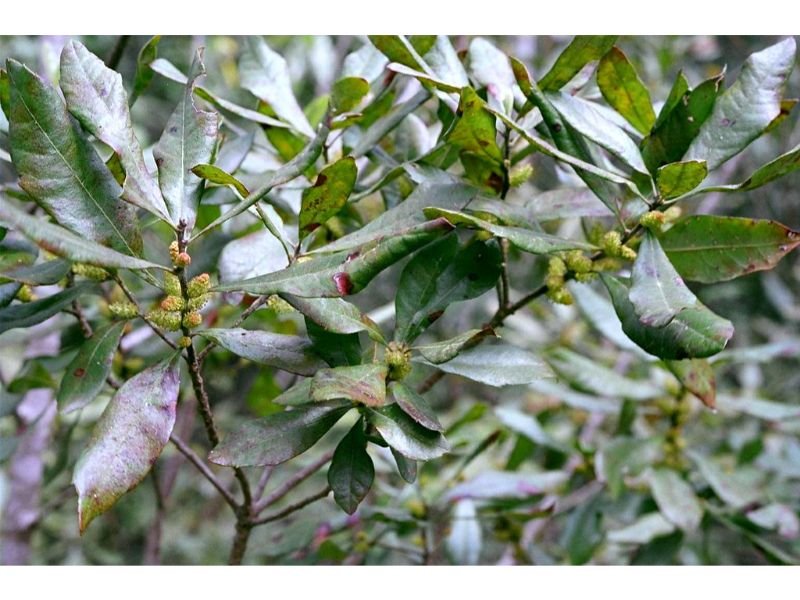
Plant Dimensions: 10 to 16 feet high and 8 to 15 feet wide
Blooms Color: Pale green, golden-yellow
Although southern bayberry is naturally a much bigger moist soil-loving shrub than inkberry, this low-maintenance plant generally does not need much pruning. A recent study found that southern bayberry, which also has been part of traditional medicine, contains antioxidants and anti-inflammatory compounds that can be beneficial for health.
It is well-suited for wet areas in Zone 5, including cities like Cleveland, Ohio, and Milwaukee, Wisconsin.
Did You Know?
The waxy coating found in the fruits of southern bayberry was once used in candle-making. This was a kind of grueling process since a large number of berries were needed to produce just a small amount of wax.
Bog Laurel (Kalmia polifolia)
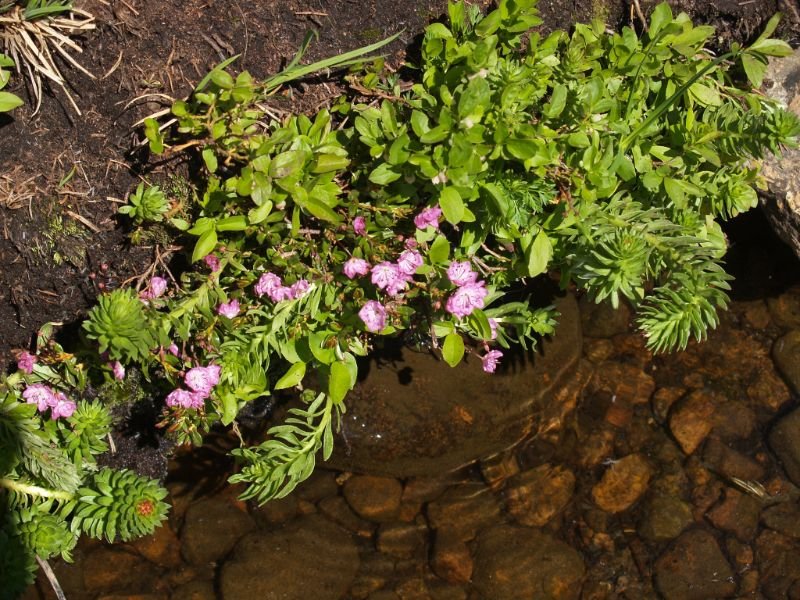
Plant Dimensions: 10 to 18 feet high and 8 to 15 feet wide
Blooms Color: Purplish-pink
Bog laurel is not a fan of full sun that requires acidic soil to flourish. This plant is also well-adapted to an environment with high humidity, and thus, may struggle to live in dry areas with hot summers and prolonged drought. However, they don’t mind cooler temperatures as well as harsh winters, making them one of the most favored plants for wet areas in Zone 5.
Bog laurel thrives in wet areas with acidic soil, making it ideal for regions in Zone 5 such as Burlington, Vermont, and Portland, Maine.
Did You Know?
Bog laurel contains toxic compounds known as grayanotoxins that can be harmful to humans and animals if ingested. The symptoms of poisoning are also known as the ‘mad honey disease’.
Spicebush (Lindera benzoin)
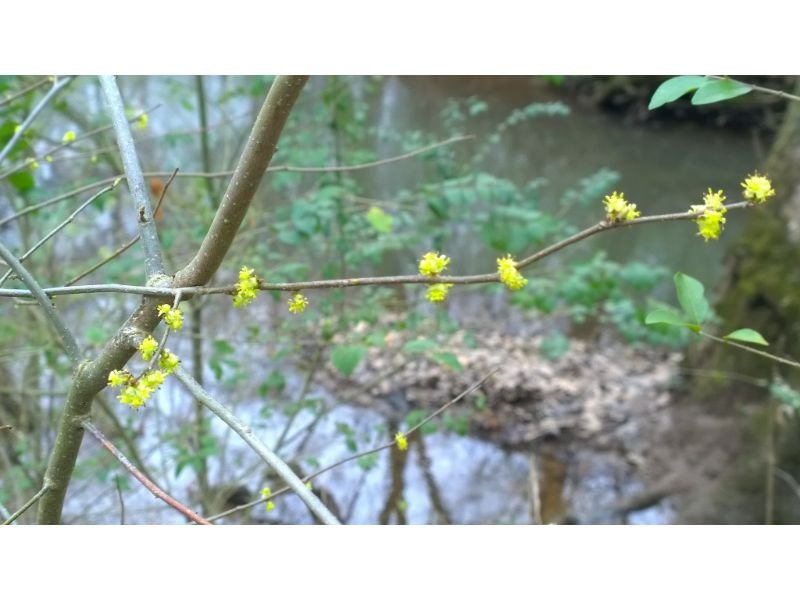
Plant Dimensions: 6 to 12 feet high and wide
Blooms Color: Golden-yellow, greenish-yellow
Spicebush is typically a hassle-free and adaptable shrub. They can grow in slightly acidic to alkaline soil with different humidity levels–from medium to high. Although not that popular, they produce edible red berries that can be dried and used as a spice. The taste is kind of similar to cloves.
It grows well in slightly acidic to alkaline soil and is suitable for wet areas in Zone 5, including cities like Detroit, Michigan, and Omaha, Nebraska.
Did You Know?
Spicebush is a vital host plant for the funny-looking caterpillars called spicebush swallowtail (Papilio troilus). These caterpillars rely on the plant as a food source, and they have a set of ‘eyes’ that looks like a cartoon face.
Shrubs for Wet Areas Zone 5 and Full Sun
Common Elderberry (Sambucus canadensis)

Plant Dimensions: 6 to 12 feet high and wide
Blooms Color: Creamy white
These stunning shrubs for wet areas in Zone 5 are adaptable to a broad type of soil. It can be loam, sand, or clay soils as long as it’s well-drained and high in organic matter. Originating from North America, common elderberries are not only suitable for moist and cool areas, but they also do well in environments with hot summers.
It thrives in wet areas of Zone 5, such as Indianapolis, Indiana, and Madison, Wisconsin. Common elderberry can tolerate both moist and cool conditions as well as hot summers.
Did You Know?
Parts of common elderberry, including fruits, barks, and foliage can be used as a natural fabric dye. The gorgeous plant produces various shades of purple and gray.
Also Read:
- The Best Indoor Plant Grow Lights for Thriving Houseplants
- Gardening Books: Essential Reads for Green Thumbs
- DIY Garden Projects: Creative Planting Ideas
- The Ultimate Guide to Organic Fertilizers for Healthy Plant Growth
- Must-Have Garden Insecticide for Pest Control Solutions
Buttonbush (Cephalanthus occidentalis)
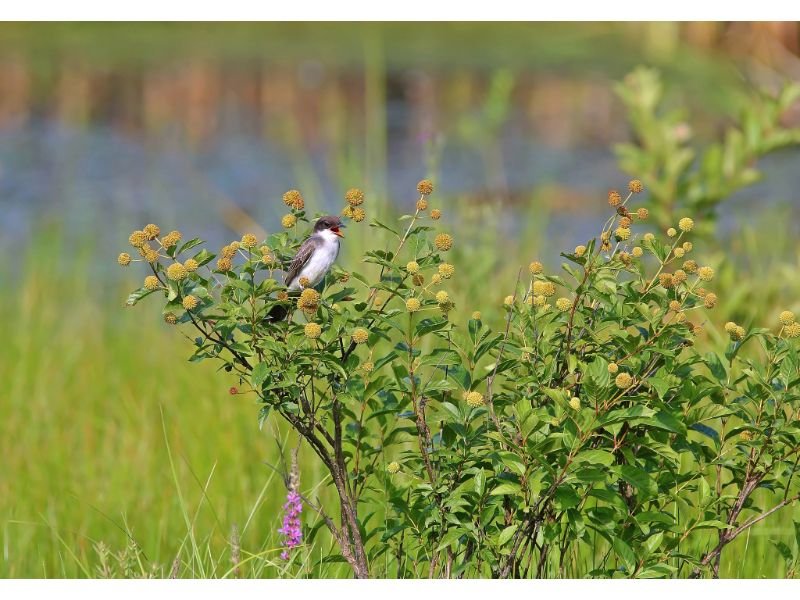
Plant Dimensions: 8 to 12 feet high and wide
Blooms Color: Creamy white, pale pinkish-white
Generally requires cultivation needs that are not difficult to replicate, there are a few challenges you need to consider when growing these beautiful shrubs for wet areas of zone 5. Yes, buttonbush, in some regions, has a high potential of being invasive or weedy. Nonetheless, their adaptability to stabilize soil erosion still makes them such valuable assets!
Buttonbush is a beautiful shrub that is well-suited for wet areas in Zone 5, including cities like Pittsburgh, Pennsylvania, and Syracuse, New York. While it offers benefits like soil erosion control, it can potentially be invasive in some regions. Proper monitoring is recommended.
Did You Know?
Buttonbush shrubs are home to breathtaking insects such as the Virginia creeper sphinx (Darapsa myron) and painted lady (Vanessa cardui) butterfly.
Sweet Pepperbush (Clethra alnifolia)
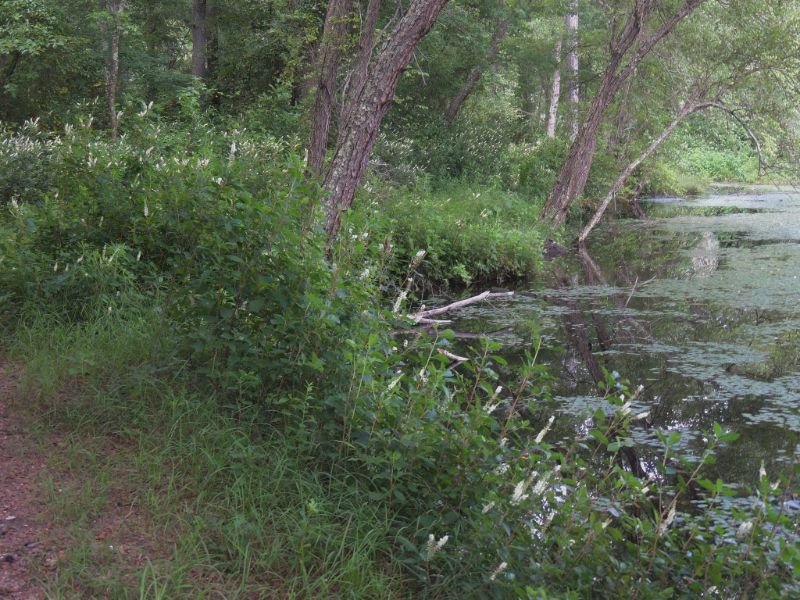
Plant Dimensions: 4 to 8 feet high and 4 to 6 feet wide
Blooms Color: White, greenish-white, pale magenta
Similar to bog laurel, sweet pepperbush shrubs are craved for acidic soil with a pH of 4.5 to 6.0. Ensure the soil has good drainage to prevent root rot. Among shrubs for wet areas of zone 5, these plants are not that forgiving when it comes to overly waterlogged conditions.
Sweet pepperbush shrubs are ideal for wet areas in Zone 5. Cities like Boston, Massachusetts, and Albany, New York, provide suitable conditions for their growth.
Did You Know?
Sweet pepperbush shrubs are renowned for their highly fragrant and nectar-rich flowers. They also produce fruits, which are not known for being edible but are enjoyed by small birds and mammals.
White Meadowsweet (Spiraea alba)

Plant Dimensions: 2 to 4 feet high and wide
Blooms Color: White, pale pink
To maintain the shape and promote more vigorous blooming, it’s recommended to prune white meadowsweet shrubs in early spring. With a spreading growth habit and underground rhizomes, these shrubs for wet areas in Zone 5 can potentially result in unwanted growth. Thus, regular monitoring and containment methods may also be needed.
White meadowsweet shrubs thrive in wet areas of Zone 5, such as Minneapolis, Minnesota, and Buffalo, New York.
Did You Know?
White meadowsweet shrubs contain salicylic acid that is similar to what we found in aspirin. The plant has been used to treat illnesses such as reducing pain, fever, and digestive-related issues.
Ground Covering Plants for Wet Areas Zone 5
Marsh Pennywort (Hydrocotyle umbellata)

Plant Dimensions: 6 to 12 inches high and 2 feet wide
Blooms Color: White, pale yellowish-green
As the name indicates, marsh pennywort is best suited for areas with high humidity such as marshes, wetlands, and zones with ample moisture. When it comes to lighting, this centella asiatica lookalike prefers partial to full shade but tolerates some direct, bright sun too.
It can be grown in cities like Des Moines, Iowa, and Ann Arbor, Michigan.
Did You Know?
Marsh pennywort has been used topically to treat skin conditions like rashes, burns, and insect bites, and has potent anti-inflammatory compounds. In some cultures, they’re also consumed and usually added to salads or cooked as a vegetable.
Creeping Jenny (Lysimachia nummularia)
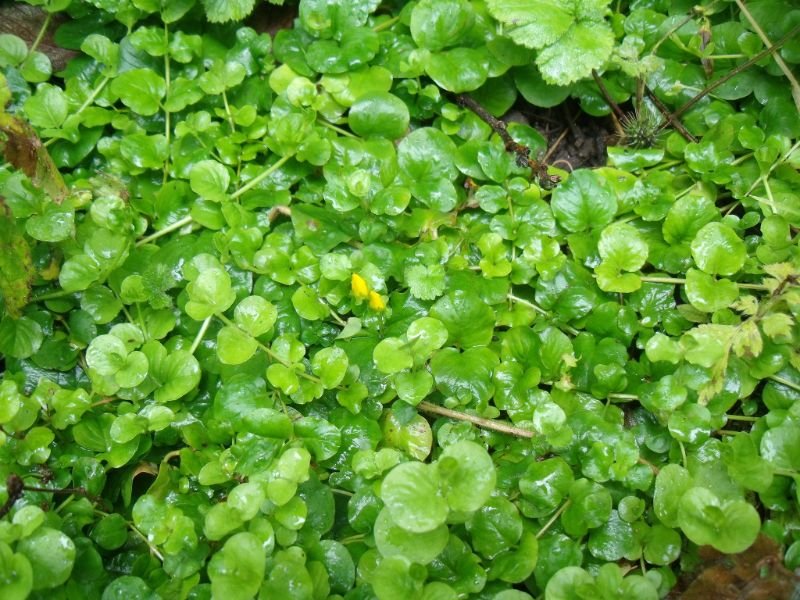
Plant Dimensions: 2 to 4 inches high and 3 feet wide
Blooms Color: Bright golden-yellow
Creeping jenny is equally just as attractive as shrubs for wet areas of zone 5 with their contrasting blooms and foliage hue. They require minimal pruning and fertilizing, tolerating a broad range of soil as long as it’s well-drained and moist, as well as various levels of humidity–truly a superstar!
It is a popular choice for suppressing weed growth in wet areas of Zone 5, such as Pittsburgh, Pennsylvania, and Syracuse, New York.
Did You Know?
Creeping Jenny is also known as “moneywort”, due to its round foliage that resembles a coin. This plant has dense growth and is often used by many gardeners to suppress weed growth.
Mazus (Mazus reptans)
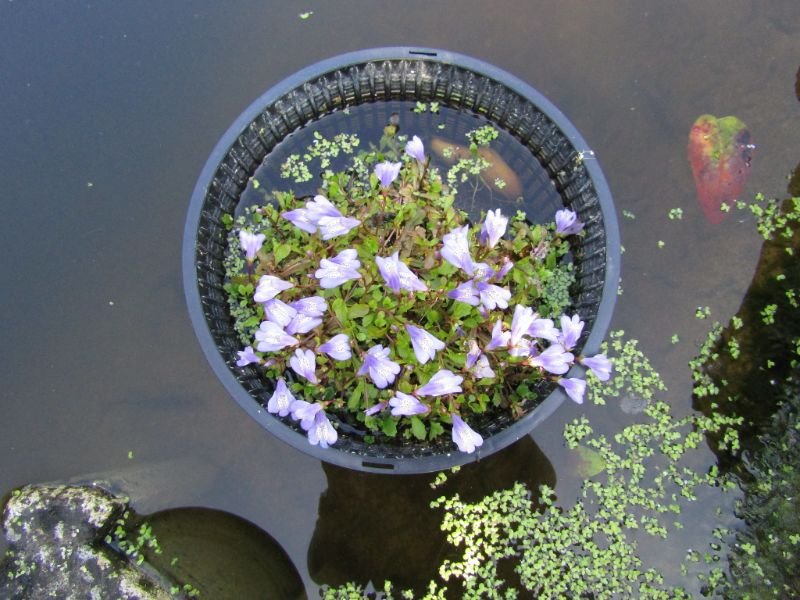
Plant Dimensions: 2 to 4 inches high and 15 inches wide
Blooms Color: Blue, pale purplish-blue
Mazus is a lesser-known plant that deserves more spotlight. They generally don’t ask much to thrive besides slightly acidic to neutral, moist soil and partial to full shade conditions. This plant can withstand cold winters and is more suitable for cooler zones.
It is an excellent choice for ground cover in wet areas of Zone 5, including cities like Burlington, Vermont, and Madison, Wisconsin.
Did You Know?
Mazus is known for its rapid growth and fast-spreading habit. A rare gem to the botanical world, this plant produces trumpet-shaped, tiny flowers in shades of blue and purple.
Plants and Shrubs for Wet Areas Zone 5: A Conclusion
With these shrubs and plants selection, you can freely embrace your gardening skill without worrying about the challenges of damp soil in zones 5. But as with any gardening endeavor, it’s worth noting to always regularly monitor the health and growth of your moist-loving plants.

New author in the hood. Loves gardening and flowers are my spirit animals (yes I know they are not animals but I insist). I will be covering most of the flowers’ topics here and occasionally random though as well.






